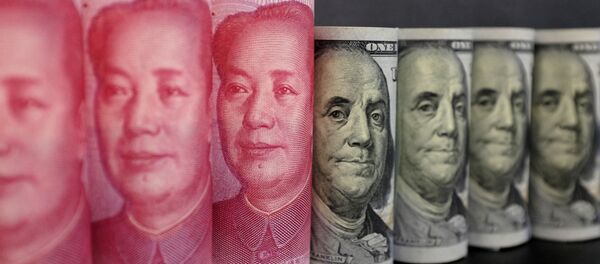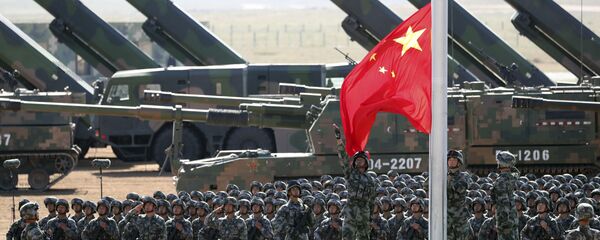Kristian Rouz – The Commerce Department said Friday that it found China had been selling aluminum foil in the US market at unfairly low prices. The revealed dumping practices have hurt domestic manufacturers, as well as other exporters of aluminum to the US, thus challenging the World Trade Organization’s (WTO) rules.
READ MORE: UK Economic Health in Doubt as Bank of England Nears Rate Hike
This comes ahead of President Trump’s visit to mainland China, where he will push Beijing on its unfair trade practices, and seek a joint platform on the North Korean issue, as well as other issues.
The move suggests that President Trump is adamant to eliminate the deep US trade deficit, and seeks to negotiate trade with China by demonstrating the possible negative effects on Chinese industries in the event of non-cooperation.
Last year, Chinese aluminum foil imports to the US stood at $389 mln; in other words, foil only accounts for a small share of what the US imports from China. In 2016, the US trade deficit with China was $309.6 bln, while the total volume of bilateral trade was $578.6 bln, with US exports to China valued at $115.8 bln, and total imports at $462.8 bln.
READ MORE: Exposed: Fed Hikes Reveal Central Bank’s Elusive Grip on Economy
The Commerce Department said its final review on trade with China will conclude by February, at which point it plans to implement similar additional measures. This will largely depend on China’s willingness to review its approach to trade with the US.
The duties imposed in August were countervailing, meaning they are aimed at counteracting and balancing unfair or one-sided subsidies of goods America's trade partners export to the US. The new duties reflect anti-dumping laws; this is more serious, as these target products sold in the domestic (US) market at a below-market price.
Additionally, Commerce Secretary Wilbur Ross launched investigations into China’s stainless steel products over the suspected unfair subsidies (making them more competitive), and US Trade Representative Robert Lighthizer is probing China’s intellectual property practices.
READ MORE: Xi Jinping Declares Era of 'National Rejuvenation' in China
The latter concerns China’s alleged copying of foreign technology – including American tech –so that it may make domestic products at lower prices and sell them in the international market.
Aluminum is becoming an increasingly profitable industry, with the aluminum price expected to rise to $2,000/metric ton compared to the previous forecast of a $1,900/metric ton, according to BMI Research. There is a deficit of aluminum forming in the global market, which is pushing the prices up and benefitting countries such as Brazil and Australia, as well as China – which is willing to trade aluminum and aluminum products below their market price.



